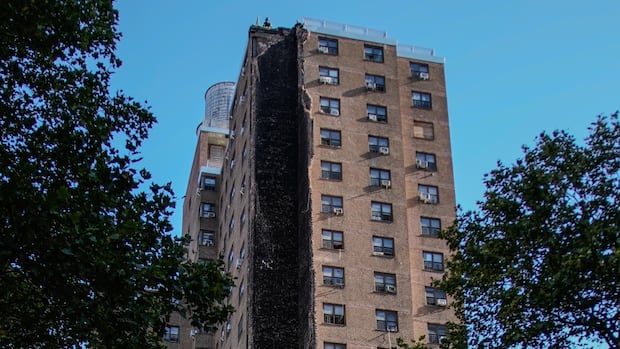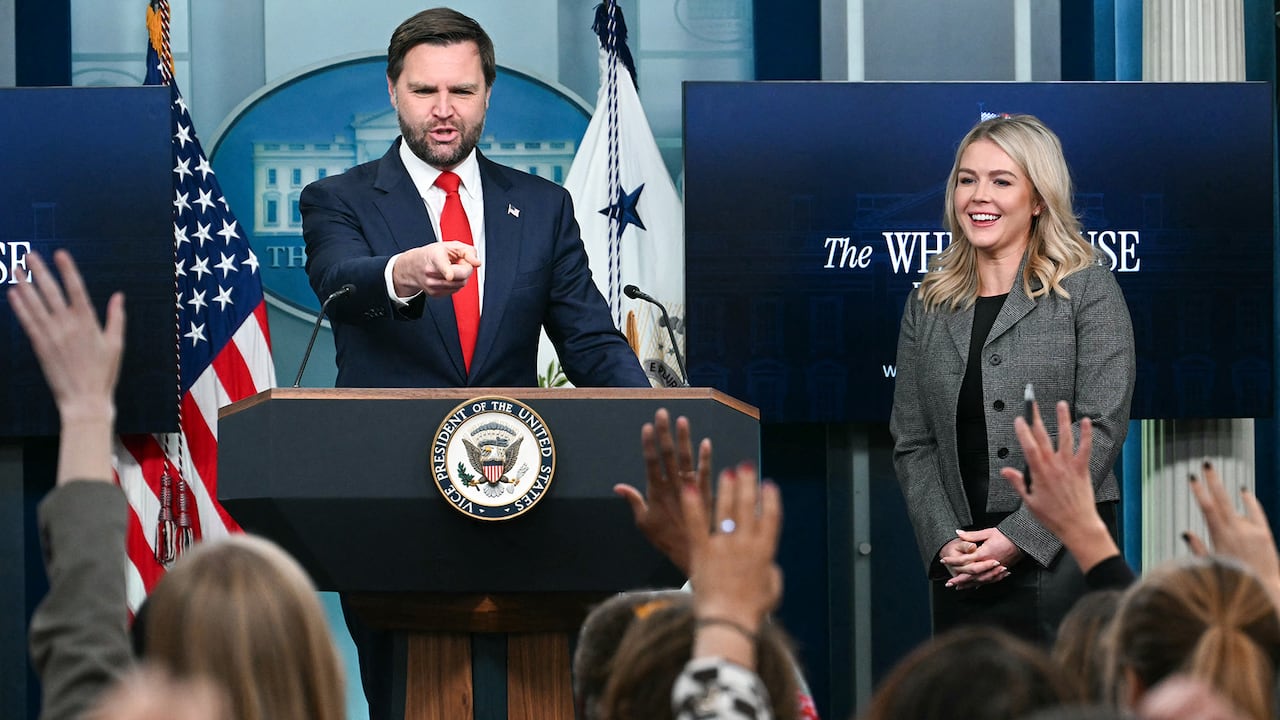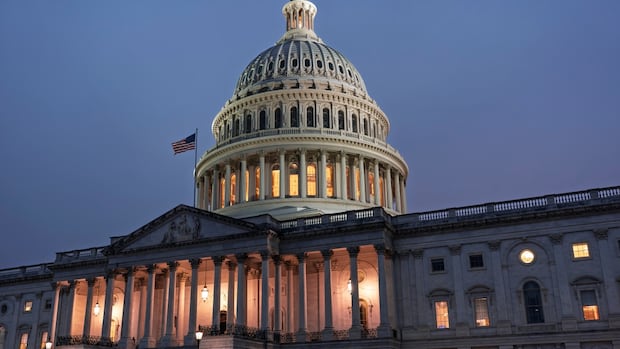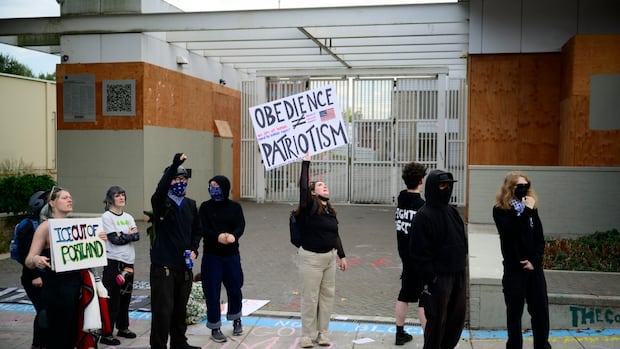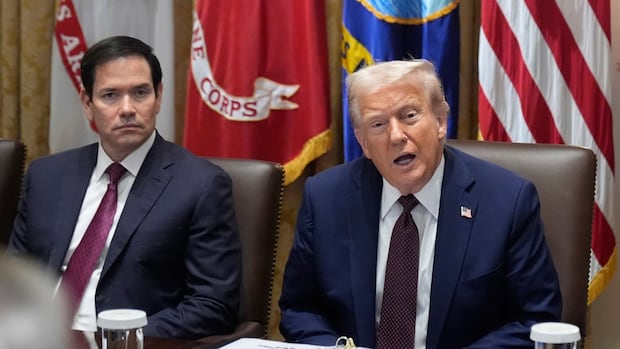A shutdown of the U.S. government is looking all but inevitable and there's growing concern the Trump administration is poised to use it as an opportunity to launch mass firings of federal employees.
It's now less than 48 hours until the 11:59 p.m. Tuesday deadline for Congress to approve a spending resolution before a new fiscal year begins and the government's discretionary spending tap is turned off.
News emerged over the weekend that the U.S. president will meet the Republican and Democrat congressional leaders on Monday afternoon, but both sides warned against interpreting that as a sign of an imminent deal.
While impasses threatening a shutdown have become so routine in the U.S. that you might be tempted to yawn, Donald Trump's recent unprecedented flexing of presidential powers provides plenty of reason to believe that this one could play out like never before.
William Resh, a professor at Georgia State University who has studied shutdowns, says he's concerned this version will be far more than just a temporary disruption to some federal services.
"If past shutdowns were a high-stakes game of chicken, this one is shaping up to be something different," Resh told CBC News.
 Trump walks toward Air Force One at Joint Base Andrews, Md., en route to the Ryder Cup golf tournament in Farmingdale, N.Y., on Friday. (Luis M. Alvarez/The Associated Press)
Trump walks toward Air Force One at Joint Base Andrews, Md., en route to the Ryder Cup golf tournament in Farmingdale, N.Y., on Friday. (Luis M. Alvarez/The Associated Press)The evidence for that comes in a directive from the White House Office of Management and Budget, the arm of the administration that oversees spending in federal agencies and reports directly to the president.
The memo orders agencies to prepare what are called "reductions in force" notices — a euphemism for mass firings — in programs that are "not consistent with the president's priorities."
Vehicle for culling the workforceThis means the shutdown could become "a vehicle for culling entire segments of those parts of the workforce that are not aligned ideologically with the president," said Resh.
This tactic differs notably from how federal agencies handled past shutdowns, by putting non-essential government workers such as national parks staff and Internal Revenue Service clerks on temporary furlough.
U.S. government shutdowns happen when the House of Representatives, the Senate and the White House can't agree on a budget. Although the Republicans currently control all three, the party is seven short of the 60 votes needed to get a spending resolution through the Senate, making some bipartisan deal-making necessary.
Those negotiations often go down to the wire, but have resulted in an actual shutdown only three times since 2000, two of them during Trump's first term.
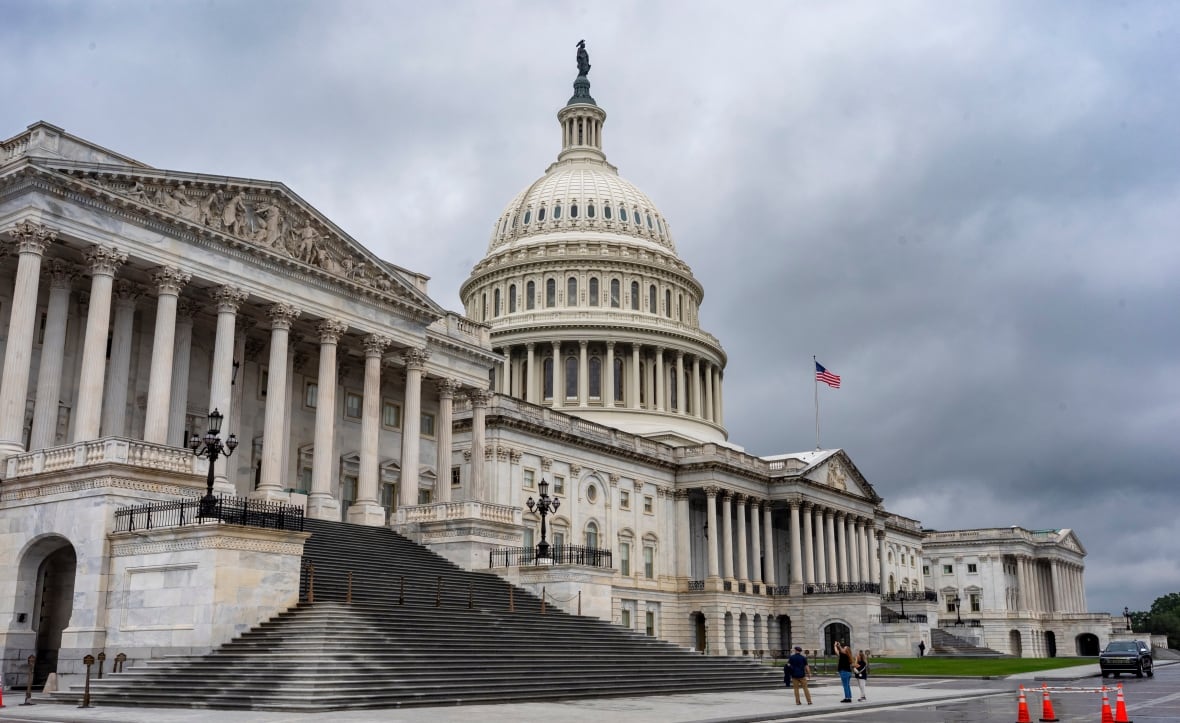 U.S. government shutdowns happen when the House of Representatives, the Senate and the president can't agree on a budget. Although the Republicans currently control all three, they need 60 votes to get a spending resolution through the Senate, so need support from at least seven Democrats. The U.S. Capitol is pictured on Sept. 25. (J. Scott Applewhite/The Associated Press)
U.S. government shutdowns happen when the House of Representatives, the Senate and the president can't agree on a budget. Although the Republicans currently control all three, they need 60 votes to get a spending resolution through the Senate, so need support from at least seven Democrats. The U.S. Capitol is pictured on Sept. 25. (J. Scott Applewhite/The Associated Press)Peter Loge, director of the School of Media and Public Affairs at George Washington University, says what will make this shutdown different is Trump "acting much more authoritarian" than in his first stint in the White House.
Loge is quite certain a shutdown will happen, in large part because he believes the Democrats have no real leverage to stop it.
"A lot of the Republican leadership, and I expect President Trump and those closest to him want to shut down," Loge said in an interview.
During a shutdown, more precisely known as a "funding gap," the entire government doesn't cease to function. Essential services required by law remain in place. But the power to decide which jobs and which agencies are dispensable rests largely with the White House.
Loge says the Republicans believe they can persuade voters that the Democrats are to blame for what happens.
There are signs that Trump and his allies are already trying to lay that groundwork.
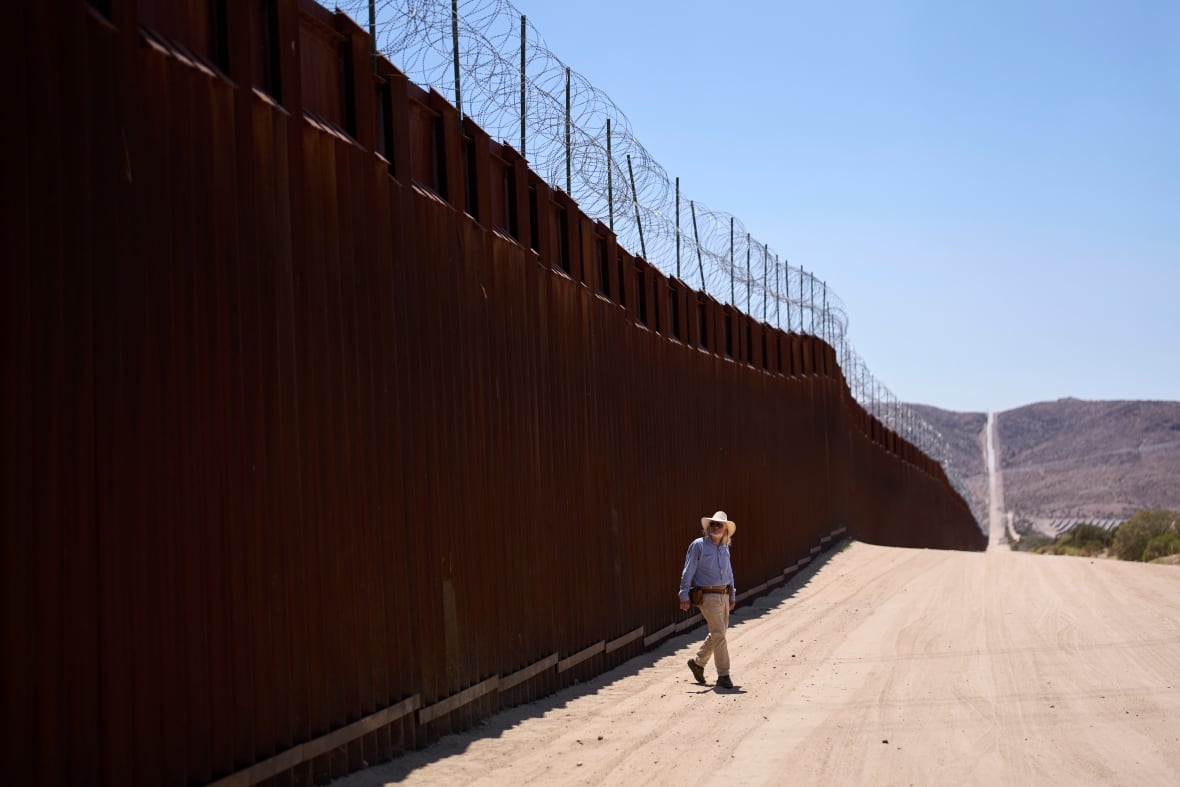 The last government shutdown, in 2019, largely hinged on Trump's demands for billions of dollars for building his promised wall along the border with Mexico, at a time when the Democrats held a majority in the House. This photo shows the wall near Jacumba Hot Springs, Calif. on June 5. (Gregory Bull/The Associated Press)
The last government shutdown, in 2019, largely hinged on Trump's demands for billions of dollars for building his promised wall along the border with Mexico, at a time when the Democrats held a majority in the House. This photo shows the wall near Jacumba Hot Springs, Calif. on June 5. (Gregory Bull/The Associated Press)"These people are crazy, the Democrats," Trump said outside the White House on Friday when a reporter asked for comment on the possibility of a government shutdown.
"If it has to shut down, it'll have to shut down. But they're the ones that are shutting it down."
Trump cancels weekend meeting, goes golfingDemocratic House Minority Leader Hakeem Jeffries says the Republicans should take the blame because they hold the presidency and control Congress.
"The Republicans have determined that they want to shut down the government and hurt the American people. That's an unacceptable and irresponsible position," Jeffries told a news conference last week.
The Democrats are describing the Republican plan as an assault on affordable health care for millions of Americans. Key to their demands is an extension of Obama-era health insurance tax credits that are poised to expire.
Jeffries and Chuck Schumer, who leads the Senate Democrats, had a meeting scheduled with the president for this weekend to discuss the budget impasse, but Trump announced in a social media post that he was cancelling it. He spent the weekend golfing.
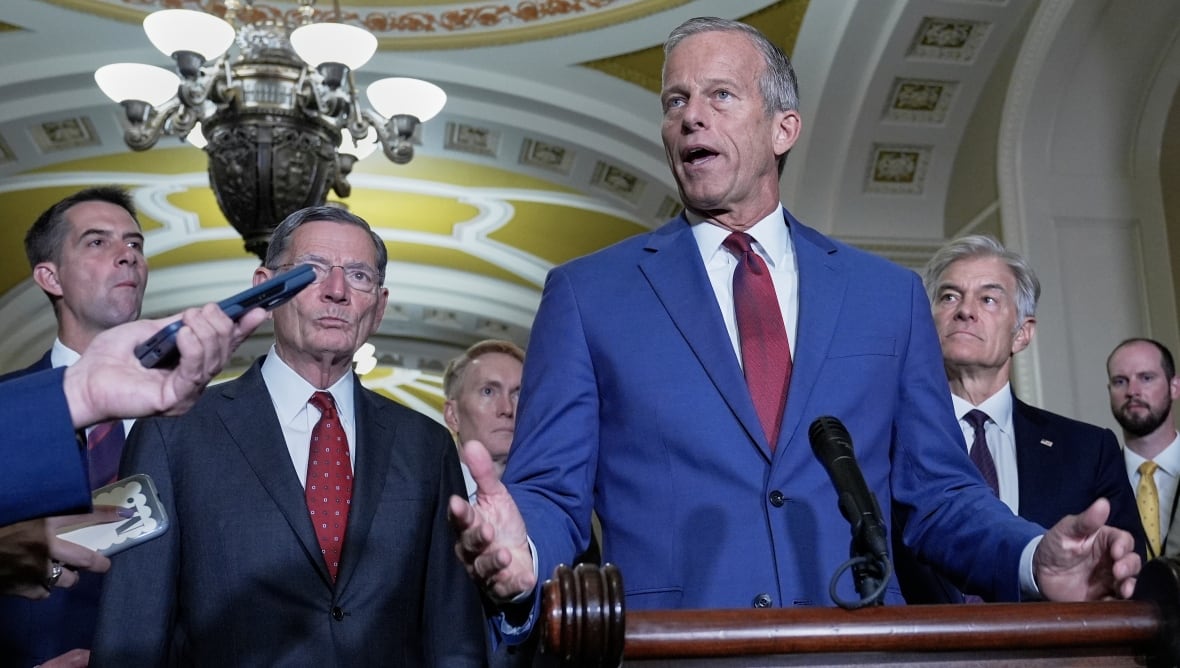 Senate Majority Leader John Thune is dismissing the Democrats' budget demands as 'liberal special-interest stuff.' (Mariam Zuhaib/The Associated Press)
Senate Majority Leader John Thune is dismissing the Democrats' budget demands as 'liberal special-interest stuff.' (Mariam Zuhaib/The Associated Press)The president is now due to sit down on Monday afternoon with Jeffries, Schumer and their Republican counterparts — House Speaker Mike Johnson and Senate Majority Leader John Thune.
But the tone going into the meeting remains polarized.
'Compromise on what?'Thune dismissed the Democrats' demands as "liberal special-interest stuff" in an interview on NBC's Meet the Press.
"Compromise on what?" Thune bristled when host Kristen Welker asked the Republican about compromising to avert a shutdown.
"What the Democrats have done here is take the federal government as a hostage — and by extension the American people — to try and get a whole laundry list of things that they want," said Thune.
On the same show, Schumer called the meeting "only a first step" and said it will only work if the Republicans are serious about negotiating.
"If the president at this meeting is going to rant and just yell at Democrats and talk about all his alleged grievances and say this, that and the other thing, we won't get anything done," Schumer said.
WATCH | A timeline of James Comey's trajectory from FBI director to Trump target: In an apparent escalation of U.S. President Donald Trump’s attacks on his political enemies, former FBI director James Comey has now been indicted on criminal charges. For The National, CBC’s Lyndsay Duncombe lays out a timeline of how it got to this point.For the Democrats, there's no straightforward political formula for how to navigate this standoff.
In the spring, confronted with a similar budgetary deadline, Schumer gave in, allowing the Republican spending measures through Congress, and took heat from some Democrats for failing to stand up to Trump.
But if this current impasse results in a shutdown that triggers permanent cuts to the federal workforce, the Democrats risk wearing it politically.
Loge says Trump's willingness to let the shutdown happen is driven by a desire to punish his opponents.
"President Trump has made it pretty clear that he will punish the American people to get what he wants politically," Loge said.
He describes this as "a partisan political stripe that runs counter to what virtually every other president in the history of the Republicans has done."
The last shutdown, in 2019, was also the longest in U.S. history, lasting 34 days. It largely hinged on Trump's demands for billions of dollars in funding for building his promised border wall, at a time when the Democrats held a majority in the House.


